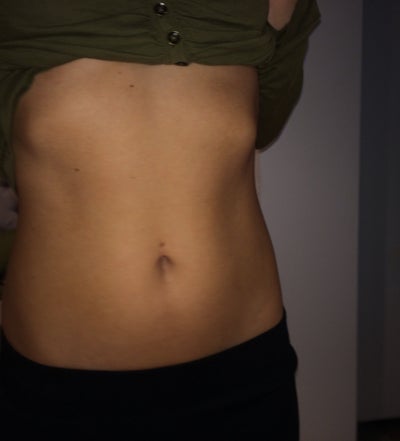
Boys have an increased risk of developing inguinal hernia, a condition characterized by protrusion of parts of the large intestine through an opening in the abdominal wall near the groin. The ribs may be fused together, misaligned, broadened, split or forked (bifid), and sometimes some of the ribs are missing. Multiple vertebrae are always affected, usually at least 10 segments in a row (contiguously). Sometimes, they are underdeveloped and wedge-shaped (hemivertebrae). The bones of the spine (vertebrae) may be fused together or misshapen. Affected individuals have abnormalities in the development of the spine and ribs. The signs and symptoms of spondylocostal dysplasia can vary greatly from one person to another, even among members of the same family. Jarcho and Levin were two doctors who first described what is now known as spondylothoracic dysplasia in the medical literature in 1938. Other researchers believe the widespread, inconsistent use of Jarcho-Levin syndrome has rendered the term obsolete and that its use should be discontinued. Some researchers have advocated that Jarcho-Levin syndrome be reserved for people with spondylocostal dysplasia. This has led to confusion for individuals and families who receive a diagnosis of Jarcho-Levin syndrome. The term Jarcho-Levin syndrome is still used for both disorders, and sometimes it is used as an “umbrella” term to describe a broad range of conditions associated with spinal and rib defects. Researchers now know that these disorders are separate entities with different causes and associated malformations. For years, this disorder and a similar disorder, spondylothoracic dysplasia, were considered the same disorder and referred to as Jarcho-Levin syndrome. There is significant confusion in the medical literature regarding names for spondylocostal dysplasia. With treatment, most individuals survive well into adulthood. Many individuals do not have a mutation in any of these genes. One gene, TBX6, is known to cause autosomal dominant spondylocostal dysplasia. Rarely, spondylocostal dysplasia can be inherited in an autosomal dominant manner. Most times, spondylocostal dysplasia is inherited in an autosomal recessive manner and is caused by a change (mutation) in one of four genes, DL元, MESP2, LFNG, HES7. Sometimes, breathing difficulties can be severe and life-threatening. The thorax is the middle portion of the body extending from the neck to the abdomen and including the chest cavity. Some infants may have difficulty breathing because of a reduced size of the thorax. The severity and specific symptoms can vary among affected individuals, even among members of the same family. These malformations are present at birth (congenital). Ribs can be fused or missing in chaotic patterns. Spondylocostal dysplasia is a rare genetic disorder characterized by defects of the bones of the spine (vertebrae) and abnormalities of the ribs. 5 Myths About Orphan Drugs and the Orphan Drug Act.Information on Clinical Trials and Research Studies.

Due to your spine’s abnormal curve, other parts of your body may adjust to accommodate the curvature. If you have scoliosis, you may also have uneven ribs. If your muscles on one side of your body are weaker, it may be causing one side of your rib cage to stick out or sit unevenly. Your abdominal muscles play a large role in holding your rib cage in place. If your rib cage is slightly uneven or protruding, it may be due to a muscle weakness. Many cases of rib deformities are corrected with a brace, but some may require surgery. These deformities cause the chest to bow outwards or inwards. Rib cartilage deformitiesĭeformities such as pectus carinatum and pectus excavatum affect roughly 1 in 1,500 children.

If your rib cage is causing you distress or pain, you should speak to your doctor. You may be missing a rib or your rib cage may be naturally flared. If you’ve had an uneven rib cage from birth, it may be from a birth defect. If your injury occurred a short time ago, consider talking to a medical specialist to assess your rib injuries and promote symmetrical healing. If time has passed since the incident, your ribs may require surgery to regain symmetry. If you’ve had a trauma to your ribs such as a break or sprain, you may have an uneven rib cage. Some causes of an uneven rib cage include: Trauma An uneven rib cage can cause problems with your breathing, posture and possibly your body confidence.


 0 kommentar(er)
0 kommentar(er)
